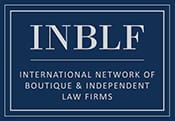Oh, Those Wacky Food Labels
By Eric F. Greenberg, Attorney-at-law
This month, we’ll look at two agencies’ efforts to update food labels: The U.S. Department of Agriculture’s “bioengineered” foods regulations (and the punch in the nose the agency got from a federal court about them), and the Food and Drug Administration’s proposal to update its definition of foods that can claim to be “healthy.”
1. BIOENGINEERED RULES: Regulatory agencies sometimes go astray. For example, FDA recently posted an announcement titled, “FDA Releases Food Safety Prevention Strategies.” Now, lots of folks have a lot of opinions about what agencies do that’s right and wrong, but clearly, at a minimum, at least one of them need more grammar police.
A more substantive example is the USDA, and how it went astray according to a federal court. Here Congress had passed a law that instructed USDA to make a batch of rules for when and how foods should reveal that they contained what used to be referred to as “genetically modified organisms,” and the rules USDA came up with allowed such disclosures to be made via an electronic or digital link—that is, a QR code—on a food label. Was that adequate disclosure?
No, said a federal court in California in September. The regulations were challenged in court by consumer advocacy groups. The court said many parts of them were valid, including their adoption of the relatively new terminology referring to these foods as “bioengineered” rather than the more familiar “genetically modified” or “genetically engineered.”
The regulations offered four options for how to make the disclosure that the food was bioengineered: text disclosure, use of a symbol, electronic or digital disclosure, or a text message. Specifically, part of the regulation allows companies to make the disclosure using an electronic or digital disclosure, such as a QR link, and to accompany it on the label with the statement “Scan here for more food information” or equivalent language, and a telephone number that a caller can use to obtain the bioengineered food disclosure.
Now, when regulatory agencies make regulations, they are supposed to follow Congress’ instructions, and courts will invalidate regulations that don’t. Here, the court said Congress told USDA to study “whether consumers would have access to the bioengineering disclosure through electronic or digital disclosure methods,” and USDA did that, but the court found that “access problems abounded.” That is, USDA’s study found that not everyone had smartphones or broadband to allow them to scan the codes. And in such a situation, Congress said USDA was supposed to provide “additional and comparable options,” like the alternative text message instructions, to the electronic disclosure. Instead, they just added another option, a text message option, as an alternative to the electronic or digital link.
What’s more, the court said, Congress didn’t authorize USDA to make a standalone text message disclosure option at all. On top of that, USDA’s “decision to provide a separate text message disclosure option did nothing to fix the problem of inaccessible electronic disclosures.”
So it’s back to the drawing board for USDA. Whatever they come up with, it’ll have to be something other than the QR code alone on a package label, maybe with more informative text accompanying it. In the meantime, though, the court said it won’t vacate the problematic regulations, so companies can keep using the QR code per the current regulation while we wait for USDA’s next move.
2. HEALTHY GETS AN UPDATE: Defining what is and isn’t “healthy” to eat is more difficult than you might at first expect. FDA has had a regulation articulating a definition of the term since the mid-1990s, and thinks that nutrition science has evolved since then in ways that make the current definition obsolete. So, it has proposed an updated definition that it thinks better reflects current nutrition science. The proposal appeared in the Federal Register for September 29, and public comments on it are due December 28.
FDA says that a labeling claim that a food is “healthy” is an implied claim of nutrient content, because it implies that the food contains good-for-you components and not too many less good-for-you components. Nutrient content claims are a type of claims that tout a food’s content of nutrients. Examples are low fat and high fiber.
And for years, FDA has had in place a big long part of a regulation, complete with a chart, that explains when foods can and can’t make the label claim that the food is healthy. Under the new proposal, FDA is adjusting its existing parameters, so that a food that wants to make the voluntary claim that it’s healthy “would need to contain a certain amount of food from at least one of the food groups or subgroups (e.g., fruit, vegetables, grains, dairy and protein foods)” that are recommended by the 2020-2025 edition of the Dietary Guidelines for Americans. Also, “The specific limits for added sugars, saturated fat and sodium would be based on a percentage of the Daily Value for these nutrients.” Raw whole fruits and vegetables would qualify to claim to be healthy “because of their nutrient profile and positive contribution to an overall healthy diet,” an FDA document explains.
The proposed regulation contains an informative explanation of these proposed criteria for the various food groups.
FDA also reminded folks that it’s in the process of collecting public input on ideas for an effective front-of-pack label symbol to indicate that a food is “healthy,” which, like the definition of the term, is a more complex adventure than at first appears. [Read my April 2022 column at pwgo.to/7746.] But I think I have the simple solution: The symbol for a healthy food should be a graphic of your mother smiling. The package could scan your retina to figure out who you are, and pick the correct graphic. It’ll be easy! PW
Eric Greenberg can be reached at [email protected]. Or visit his firm’s website at www.ericfgreenbergpc.com.
INFORMATIONAL ONLY, NOT LEGAL ADVICE.


